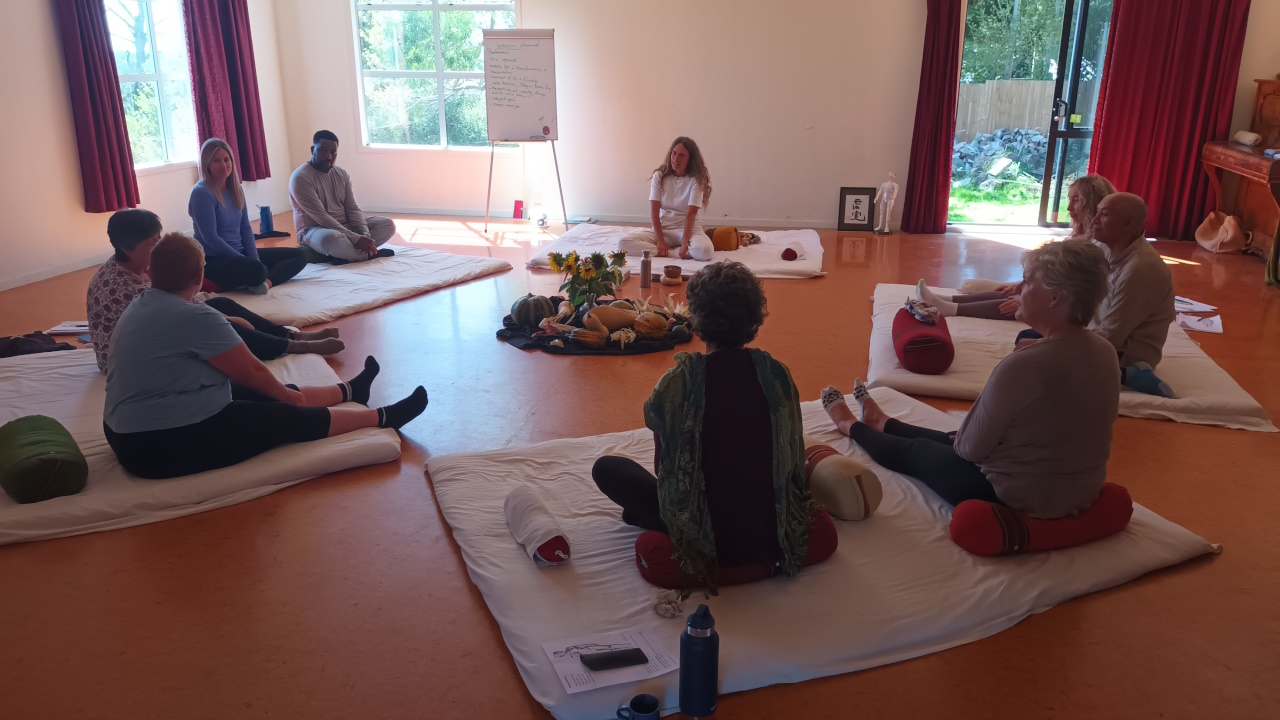In the pursuit of holistic healing approaches, sound therapy has emerged as a powerful tool for promoting relaxation and well-being in healing environments. Sound therapy harnesses the therapeutic properties of sound to create spaces that enhance physical and psychological well-being. The aim of this article is to explore the role of sound therapy in healing environments and its positive impact on patient recovery and relaxation. By understanding the principles of sound therapy and its scientific foundation, we can appreciate its potential as an effective therapeutic approach.
Sound therapy is a practice that utilizes various techniques, such as chanting, music therapy, gong baths, and singing bowls, to promote emotional and physical well-being. Each technique offers unique benefits and can be tailored to individual needs. For example, chanting involves the repetition of specific sounds or mantras, which can help to calm the mind and induce a meditative state. Music therapy utilizes carefully selected music to evoke specific emotions and promote relaxation. Gong baths involve the use of gongs to create therapeutic vibrations that resonate throughout the body. Singing bowls produce soothing sounds and vibrations when struck or rubbed, promoting deep relaxation and balance.
The therapeutic effects of sound therapy are rooted in scientific research. Studies have shown that exposure to certain frequencies and vibrations can have a profound impact on the body and mind. This is because sound, as a form of energy, can influence the body at a cellular level. Through the principles of resonance and entrainment, sound therapy aims to create a harmonious state within the body, promoting healing and well-being. Resonance refers to specific tones that encourage the body’s cells to vibrate at optimal frequencies, while entrainment synchronizes the body’s rhythms for relaxation and desired states.
By exploring the principles and techniques of sound therapy, we can gain a deeper understanding of its potential in healing environments. In the following sections, we will delve into the role of sound therapy in healing environments, the power of natural sounds, the use of music therapy, sound therapy for emotional and physical healing, the impact on patient recovery, and the connection between sound therapy and stress reduction. Through this exploration, we can appreciate the significance of sound therapy in promoting relaxation and well-being in healthcare settings.
Understanding Sound Therapy
To fully grasp the role of sound therapy in healing environments, it is important to understand its foundations and principles. Sound therapy is based on the understanding that sound, as a form of energy, can have a profound impact on the body and mind. It utilizes various techniques to promote emotional and physical well-being, such as chanting, music therapy, gong baths, and singing bowls. These techniques work by creating specific vibrations and frequencies that resonate with the body, promoting relaxation and balance.
Scientific research supports the benefits of sound therapy and its therapeutic effects. Studies have shown that exposure to certain frequencies and vibrations can reduce stress, improve sleep, and enhance overall well-being. This is because sound waves can produce vibrations that impact the body at a cellular level. Specific tones can encourage the body’s cells to vibrate at optimal frequencies, promoting a state of harmony and balance. Entrainment, another principle of sound therapy, synchronizes rhythms in the body, promoting relaxation and desired states.
One example of sound therapy is the use of singing bowls. These bowls produce soothing tones and vibrations when struck or rubbed with a mallet. The vibrations can be felt throughout the body, promoting deep relaxation and balance. Singing bowls are often used in meditation practices and healing sessions to induce a sense of calm and well-being. The therapeutic properties of singing bowls have been recognized for centuries, and their use in sound therapy continues to be popular due to their effectiveness in promoting relaxation and reducing stress.
By understanding the principles and techniques of sound therapy, we can appreciate its potential as a therapeutic approach. The use of sound to promote relaxation and well-being is rooted in scientific research and has been practised for centuries. Incorporating sound therapy in healing environments can enhance the overall experience for patients and contribute to their recovery and well-being.
The Role of Sound Therapy in Healing Environments
The role of sound therapy in healing environments is crucial for enhancing patient recovery and promoting relaxation. Hospitals and healthcare settings can be noisy and stressful environments, which can negatively impact patient well-being. By incorporating sound interventions in healthcare settings, such as soothing music or nature sounds, the negative effects of hospital noise can be mitigated. Sound therapy has been shown to reduce stress, anxiety, and pain levels, as well as improve sleep quality and overall well-being.
Research has demonstrated the deleterious effects of hospital noise on patient behaviour, sleep, and recovery. Excessive noise levels can lead to increased stress levels in patients, hinder their ability to rest, and delay the healing process. By implementing sound interventions, healthcare facilities can create healing environments that prioritize patient well-being and promote positive outcomes. Sound interventions can include the use of calming music, nature sounds, or white noise machines to create a soothing and relaxing atmosphere. These interventions have been shown to reduce stress levels and improve patient outcomes.
For example, a study found that playing calming music in pre-operative waiting areas significantly reduced patient anxiety and distress before surgery. By creating a soothing and relaxing environment through sound, patients experience a greater sense of calm and ease, which positively impacts their surgical outcomes and overall well-being. Similarly, the use of natural sounds, such as the gentle sound of flowing water or the chirping of birds, can contribute to a healing environment. These natural sounds promote relaxation, reduce stress, and improve mood, providing patients with a sense of connection to nature and enhancing their overall well-being.
Incorporating sound interventions in healing environments requires collaboration between medical practitioners, architects, and landscape designers. By working together, they can ensure that healing spaces are designed with the intention of promoting relaxation and well-being through the strategic use of sound. This collaboration can extend to the selection of materials that absorb or diffuse sound, the placement of sound-absorbing panels or acoustic treatments, and the incorporation of soundscapes or music in outdoor healing gardens. By incorporating sound therapy in healing environments, healthcare facilities can support the physical and psychological well-being of their patients and contribute to their overall recovery.

The Power of Natural Sounds in Healing Environments
Natural sounds play a significant role in creating healing environments and promoting relaxation and well-being. Pleasant natural sounds, such as singing birds and ocean waves, have been found to contribute to stress recovery and attention restoration in patients and staff. Nature-based rehabilitation (NBR) recognizes the positive effects of natural soundscapes in supporting patients’ recovery. Incorporating natural sounds in healing environments, particularly in rehabilitation gardens, enhances patients’ experiences and promotes well-being.
The healing power of nature has long been recognized, and exposure to natural sounds can have a calming and restorative effect on the mind and body. The gentle sound of a flowing stream, the rustling of leaves in the wind, or the chirping of birds can evoke a sense of tranquillity and connection to the natural world. Research has shown that exposure to natural sounds can reduce stress, lower blood pressure, and improve mood and cognitive function.
In healthcare settings, the incorporation of natural sounds can contribute to creating healing environments that promote relaxation and well-being. For example, rehabilitation gardens can be designed to include elements such as water features, wind chimes, or natural soundscapes that mimic the sounds of nature. These elements can create a soothing and calming atmosphere, providing patients with a sense of tranquillity and promoting stress recovery.
Nature-based rehabilitation (NBR) programs recognize the healing power of nature and incorporate it into the rehabilitation process. These programs often include outdoor activities, such as gardening or walking in nature, to promote physical and emotional well-being. The use of natural sounds in NBR programs further enhances the therapeutic benefits, as patients are immersed in an environment that stimulates their senses and promotes relaxation and healing.
One example of the use of natural sounds in healing environments is the installation of a “sound garden” in a hospital courtyard. This sound garden may include features such as wind chimes, water fountains, and bird feeders to create a multi-sensory experience for patients and staff. The gentle sounds of the wind chimes and the flowing water can create a peaceful and calming atmosphere, while the presence of birds can evoke a sense of connection to nature. This type of healing environment can promote relaxation, reduce stress, and enhance the overall well-being of patients and staff.
By incorporating natural sounds in healing environments, healthcare facilities can create spaces that promote stress recovery, attention restoration, and overall well-being. The therapeutic benefits of natural sounds contribute to the healing process and enhance the experiences of patients and staff. Whether it’s the calming sound of waves crashing on a beach or the gentle chirping of birds in a garden, the power of natural sounds should not be underestimated in the creation of healing environments.
Music Therapy in Healing Environments
Music therapy is a powerful tool for improving the sound environment in healing environments and promoting relaxation. Music has a calming effect and can reduce stress levels in patients, making it an effective intervention in healthcare settings. The use of music therapy has been shown to improve mood, reduce annoyance and anger, and enhance the overall patient experience and healing process.
In healing environments, the noise levels can be overwhelming for patients, especially those in a vulnerable state. Music therapy provides a means to create a more soothing and pleasant sound environment, helping patients to feel more at ease. The calming beat of a slow heart rhythm, for example, can generate feelings of security, warmth, and comfort. By incorporating carefully selected music, healthcare facilities can create a calming atmosphere that promotes relaxation and reduces stress levels in patients.
Studies have demonstrated the positive impact of music therapy on patient outcomes. For example, a study found that a relaxing sound environment with music improved mood and reduced annoyance and anger in patients. By providing a pleasant and calming sound environment, patients experience improved well-being, which can positively impact their recovery and overall healing process.
The use of music therapy in healing environments extends beyond the patient experience. It also benefits healthcare professionals, creating a more harmonious and supportive work environment. By reducing stress levels and improving mood, music therapy contributes to the well-being of both patients and staff.
An improved sound environment in hospitals has a profound impact on the overall patient experience and healing process. It creates a more calming and supportive atmosphere, reducing stress and promoting relaxation. By incorporating music therapy in healing environments, healthcare facilities can enhance the well-being of patients and staff, leading to improved outcomes and a more positive healing experience.

Sound Therapy for Emotional and Physical Healing
Sound therapy has the potential to aid in emotional and physical healing, particularly in the context of post-pandemic recovery. The use of vibrations and frequencies in sound therapy promotes relaxation and emotional well-being. Research has shown the effectiveness of sound therapy in treating stress, anxiety, asthma, and other physical and emotional ailments.
The pandemic has taken a toll on people’s mental and physical health, and many are seeking holistic approaches to aid in their recovery. Sound therapy offers a unique and non-invasive way to support emotional and physical healing. By utilizing specific vibrations and frequencies, sound therapy can help to reduce stress, promote relaxation, and restore a sense of balance and well-being.
One of the ways sound therapy can be applied is through the use of binaural beats. Binaural beats are created by playing two slightly different frequencies in each ear, which results in the perception of a third frequency. This third frequency can have specific effects on the brain, such as promoting relaxation or enhancing focus. By listening to binaural beats, individuals can experience a deep state of relaxation and mental clarity.
Combining sound therapy with other forms of therapy can enhance the overall healing process. For example, sound therapy can be integrated into mindfulness practices, such as meditation or yoga, to deepen relaxation and promote emotional well-being. Additionally, incorporating sound therapy into traditional psychotherapy sessions can provide a unique and effective approach to addressing emotional and mental health concerns.
Sound therapy has the potential to offer a holistic approach to healing, addressing both the emotional and physical aspects of well-being. By utilizing vibrations and frequencies, sound therapy can support the body’s natural healing processes and promote a sense of balance and well-being.
Sound Therapy and Patient Recovery
The impact of sound interventions on patient behaviour, sleep, and recovery in hospitals has been well-documented. Excessive noise levels in healthcare settings can lead to increased stress and hinder patient recovery. Implementing pleasant natural sounds as a non-pharmacological intervention can contribute to patient recovery and well-being.
By incorporating sound therapy in healing environments, healthcare facilities can create a more soothing and supportive atmosphere for patients. For example, the use of nature sounds, such as flowing water or birdsong, can create a calming environment that promotes relaxation and helps patients feel more connected to nature. This can contribute to reduced stress levels, improved sleep quality, and enhanced overall well-being.
Research has shown that sound interventions can positively impact patient recovery rates in healthcare settings. By reducing stress levels and creating a more pleasant sound environment, patients experience enhanced well-being, leading to improved recovery outcomes. Sound therapy provides a non-invasive and effective approach to supporting patient recovery and promoting a positive healing experience.

Sound Therapy in the Context of Shiatsu Bodywork
Sound therapy can complement and enhance the ancient healing techniques of Shiatsu therapy offered by the Shiatsu Bodywork Academy. The academy provides comprehensive training programs that incorporate sound therapy techniques into their curriculum. By integrating sound therapy into Shiatsu therapy, the academy aims to promote wellness, reduce stress, and enhance vitality.
Shiatsu therapy is an ancient Japanese healing technique that involves applying pressure to specific points on the body to promote balance and well-being. By incorporating sound therapy techniques, such as the use of sound bowls or chanting, into Shiatsu sessions, practitioners can enhance the therapeutic effects of the treatment. Sound therapy can help to deepen relaxation, release tension, and promote a sense of harmony and well-being.
The Shiatsu Bodywork Academy offers comprehensive training programs that provide individuals with the knowledge and skills to become skilled Shiatsu practitioners. These programs include hands-on experience and in-depth training in Shiatsu therapy, as well as the integration of sound therapy techniques. By combining these ancient healing practices, the academy equips practitioners with a holistic approach to healing that addresses both the physical and energetic aspects of well-being.
For individuals interested in exploring the benefits of sound therapy and Shiatsu therapy, the Shiatsu Bodywork Academy offers a range of courses and training programs. These programs provide a comprehensive understanding of both therapies and their application in healing environments. By embarking on a journey of learning and self-discovery, individuals can gain the skills and knowledge to promote wellness and vitality in themselves and others.
The Science Behind Sound Healing
The scientific principles behind sound healing provide insight into its therapeutic effects and benefits. Sound healing utilizes different aspects of sound to improve emotional and physical well-being. Sound waves can produce vibrations that impact the body at a cellular level, promoting relaxation and restoring a state of health and harmony.
Resonance and entrainment are key principles in sound healing. Resonance refers to specific tones that encourage the body’s cells to vibrate at optimal frequencies. This promotes a sense of balance and well-being. Entrainment, on the other hand, synchronizes rhythms in the body, promoting relaxation and desired states.
Scientific research supports the benefits of sound healing and its impact on overall well-being. Studies have shown that sound healing can reduce tension, anger, fatigue, and depressed mood. Sound healing has been found to help manage stress, improve sleep, reduce anxiety and depression, and enhance overall well-being. The therapeutic benefits of sound healing extend beyond relaxation and can contribute to a more balanced and harmonious state of being.
The use of music therapy in mainstream medical applications further supports the scientific basis of sound healing. Music therapy has been shown to improve patient outcomes and enhance the healing process. By incorporating music into healthcare settings, healthcare facilities can tap into the therapeutic benefits of sound and promote overall well-being among patients and staff.
Sound healing offers a natural, non-invasive, and harmonious pathway to well-being. By understanding the scientific principles behind sound healing, we can appreciate its potential as a therapeutic approach and its ability to promote relaxation and emotional and physical healing.
Conclusion: Explore the Healing Benefits of Sound Therapy
In conclusion, sound therapy plays a vital role in healing environments by promoting relaxation and well-being. By incorporating sound interventions in healthcare settings, healthcare facilities can create a more soothing and supportive atmosphere for patients. The therapeutic effects of sound therapy have been scientifically proven, with research supporting its ability to reduce stress, improve sleep, and enhance overall well-being.
The power of natural sounds in healing environments should not be underestimated. By incorporating natural sounds, such as singing birds and ocean waves, healthcare facilities can create spaces that promote stress recovery and attention restoration. Nature-based rehabilitation (NBR) recognizes the positive effects of natural soundscapes in supporting patients’ recovery. By creating healing environments that prioritize sound therapy, healthcare facilities can enhance the overall experiences of patients and staff.
Music therapy offers a powerful means of improving the sound environment in healing environments. By utilizing carefully selected music, healthcare facilities can create a calming atmosphere that promotes relaxation and reduces stress levels in patients. The use of music therapy has been shown to improve mood, reduce annoyance and anger, and enhance the overall patient experience and healing process.
Sound therapy has the potential to aid in emotional and physical healing, particularly in the context of post-pandemic recovery. By utilizing vibrations and frequencies, sound therapy can help to reduce stress, promote relaxation, and restore a sense of balance and well-being. Combining sound therapy with other forms of therapy can enhance the overall healing process and promote a holistic approach to well-being.
By implementing sound interventions, healthcare facilities can create a more soothing and supportive atmosphere for patients. The impact of sound interventions on patient behaviour, sleep, and recovery has been well-documented, highlighting the importance of incorporating sound therapy into healing environments. By prioritizing sound therapy, healthcare facilities can enhance patient recovery rates and promote a positive healing experience.
The Shiatsu Bodywork Academy offers comprehensive training programs that incorporate sound therapy techniques. By integrating sound therapy into Shiatsu therapy, the academy aims to promote wellness, reduce stress, and enhance vitality. For individuals interested in exploring the benefits of sound therapy and Shiatsu therapy, the Shiatsu Bodywork Academy provides a range of courses and training programs.
In conclusion, the healing benefits of sound therapy are significant. By incorporating sound interventions in healing environments, healthcare facilities can enhance patient recovery and well-being. The comprehensive training programs offered by the Shiatsu Bodywork Academy provide individuals with the knowledge and skills to incorporate sound therapy into their practice. Embark on a journey towards wellness and vitality by exploring the benefits of sound therapy and the comprehensive training programs offered by the Shiatsu Bodywork Academy.




